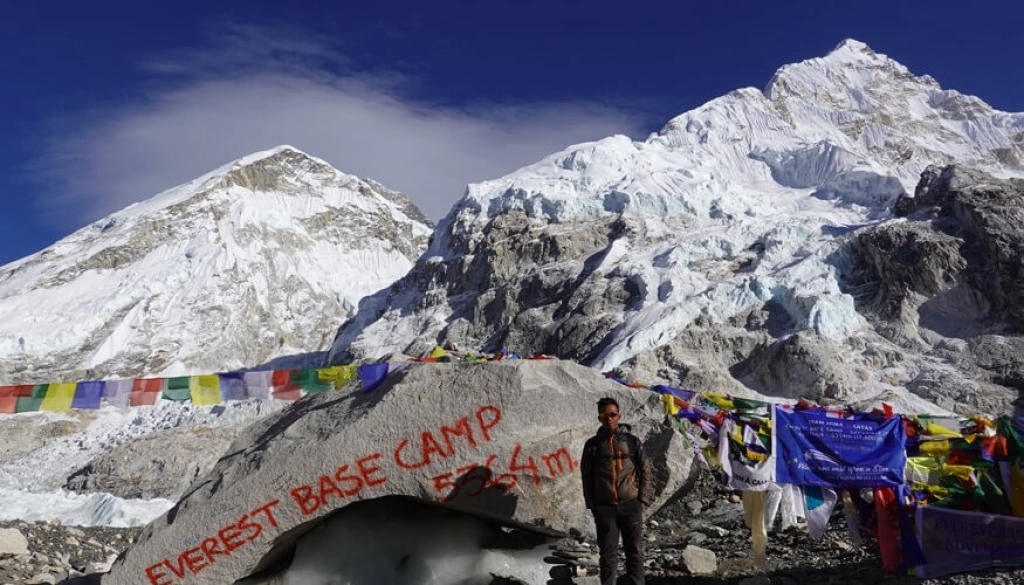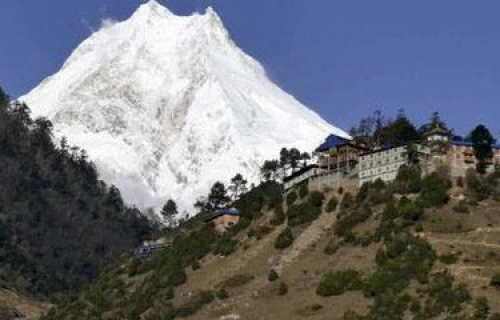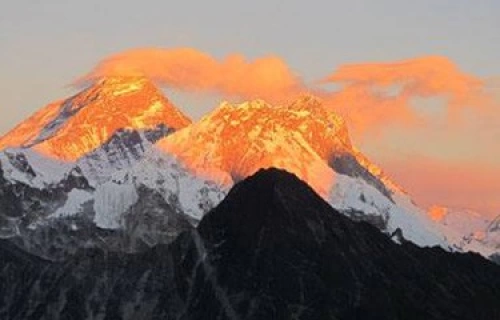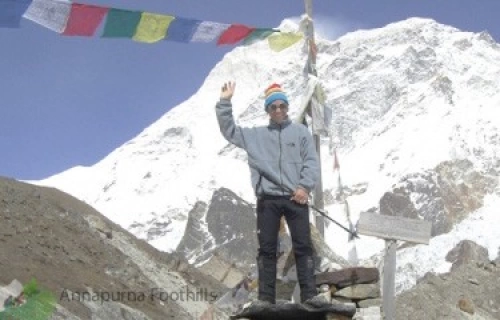About Everest South Col Expedition
The summit of Mount Everest is the ultimate mountaineering quest . Annapurna Foothills is all about excellent logistical support which will assure that this extreme challenge is the safest and most rewarding expedition possible. Our vetran Sherpa climbing guide who has led 4 successful expeditions to the summit of Mt. Everest as well as several other 8000-meter giants, will be there to support you all the way to the summit. Your commitment and perserverance and our high standard of logistical support are key factors for success.
Annapurna Foothills booking for Spring 2024 and 2025 Everest South Col Expedition:
Climbers arrive in Kathmandu no later than April 05th, 2025.
Climbers depart Kathmandu no earlier than June 05th, 2025.
Getting to Base Camp:
While we shake off our jet-lag in Kathmandu, we make sure all our official work is complete, get a briefing from the Ministry of Tourism, and finalize our supplies. There is a good selection of local and international mountaineering equipment and clothing, so it’s a good chance to do some last minute shopping.
Our Everest Expedition begins in Lukla, a 40-minute flight from Kathmandu. Our expedition supplies will be carried to base camp by yaks, zokyos (yak hybrids) and porters, while we set off up the Khumbu Valley at a more leisurely pace, which allows our bodies to acclimatize. This gives us a chance to savour the natural wonder of the Khumbu, and the cultural beauty of the local Sherpa inhabitants.
On the way to EBC, we will stop at Tengboche Monastery to request a special blessing of the lama, who will perform a puja to implore the deities to bless our expedition members and equipment. We accept a scarf, or khata, with the eight lucky Buddhist signs, as a symbol of the lama’s blessing.
By the time we arrive in Everest Base Camp about 8 days later, the Sherpas will have our camp all set up.
A Typical during Everest Expedition:
There is no fixed plan that works for all climbers and all seasons.Often, climbers will do two “acclimatization rotations” on Everest, prior to the summit bid. That said, the final rotation schedule will be decided by factors such as the weather and the health of our expedition team members. It’s crucial that everyone works as a team and communicates clearly.
The first rotation will begin after a week acclimatizing at Base Camp. We usually go to Camp I, 5950m, for a night, then to Camp II, 6400m for a couple nights, and after tagging Camp III, 7470m (no overnight this time) we return to Camp II for a night and finally back to EBC. We will likely pass by Camp I on successive climbs.
We rest in Base Camp and prepare for the second rotation. We climb to Camp III this time, and stay overnight. We descend to EBC again to prepare for the summit bid.
Everest Expedition Route Description:
Base Camp, 5400m to Camp I, 5900m
We start out from BC before daybreak to maximize the hours before the sun starts heating the glacier. The Khumbu Icefall is a moving glacier, heavy with huge seracs and crevasses. A team of Sherpas called the Icefall Doctors continually maintain a path through this dangerous area with rope and ladders. To minimize the time spent on the Icefall, we avoid any unnecessary stops. The terrain levels out just before Camp I.
Camp I, 5900m to Camp II, 6500m
The route to Camp II crosses the Western Cwm, a broad valley formed by the Khumbu Glacier. There are deep crevasses, some marked with fixed ladders and some hidden by snow bridges. The sun is blinding here, as it reflects off the snow on every side of the valley. If there are no clouds it can be very warm here. Camp II (ABC) is at the foot of the Lhotse face.
Camp II, 6500m to Camp III, 7300m
From Camp II, we start climbing the face of Lhotse, 4th highest peak in the world. It can be a challenge to get a foothold with our crampons in this wall of rock hard blue ice and packed snow. There are lines fixed into the face with screws and anchors, but since there is just one for ascending and one for descending, there can be a traffic jam on this section. We keep clipped into fixed line all the way to Camp III which is on a ledge about halfway up the Lhotse face.
Camp III, 7300m to Camp IV, 7900m
A steep climb from Camp III takes us up to the Yellow Band, a layer of limestone that cuts through these mountains. There are fixed ropes to help us climb the Yellow Band; it is not so difficult, but at this altitude nothing is easy. Most climbers are using oxygen by this point. It can be extremely cold before the sun reaches, especially if there is a wind, but once the sun climbs over Lhotse, it burns through the thin atmosphere.
Next is the Geneva Spur, a short section of rock-ice and snow, which forms the ridge leading onto the South Col, the site of Camp IV. We see the awe-inspiring summit of Mount Everest for the first time when we crest the ridge.
Camp IV, 7900m to Summit, 8850m
At Camp IV we rest, rehydrate and restore our energy in preparation for the Summit push, which usually starts late on the same day that we reach Camp IV. Most of our 10 to 12 hour climb is in the night, as our goal is to reach the summit at around 7 a.m.
- Camp IV, there is a steep triangular face leading to the Balcony, a flat area where we can rest and change over to a new oxygen bottle. Next are the slabs, which are rocks of varying size and steepness. Too little snow renders crampons almost useless on these rocks, and too much snow makes for slogging. After the slabs there is a steep snow slope leading to the South Summit, 500 meters below the true summit. An extremely exposed sharp ridge leads to the Hillary Step, the final rock wall leading to the summit.
The descent from the summit to the South Col takes 3-5 hours. Statistics reveal that this is the most treacherous feat of the Everest Expedition. Besides the effects of altitude, weather and technicalities, the additional factors of elation, fatigue, and perhaps letting ones guard down have resulted in numerous disasters on the descent to the South Col.
Return from Expedition:
The schedule allows three days for our hike from EBC back to Lukla. We are accompanied by porters carrying our gear. It’s also possible to leave EBC one day earlier for a slower 4 days trek.
Guests at Base Camp:
Except for Everest expedition members, no one is allowed to stay overnight in Base Camp. However, we want to inform you that we welcome family or friends of climbers who are interested in joining your expedition as far as Base Camp. Some of them may even be interested in one of the many treks in Everest Region, or a less challenging peak.
Option Climb Lobuche for Extra Acclimatization
For people with a sufficient time-frame, an excursion to nearby Lobuche Peak, 6119m, is a great way to ensure you are well acclimatized before you start the Mt Everest expedition.



